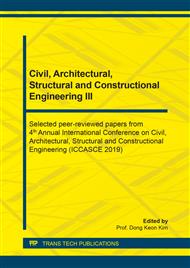p.117
p.124
p.129
p.137
p.142
p.147
p.152
p.157
p.166
Improving the Stability of Optimal Control Systems for Thermal Processing
Abstract:
The article presents the results of the analysis different methods to enhance theaccuracy, sustainability and energy efficiency of automatic control systems. Shows the constraints on the possibility of increasing the accuracy and stability of automatic control systems. The necessity of the use of self-tuning systems for control of nonstationary objects, which include the installation of thermal processing of building materials and products. Theblock diagram of the analytical self-tuning system optimal reference model.
Info:
Periodical:
Pages:
142-146
Citation:
Online since:
April 2020
Authors:
Price:
Сopyright:
© 2020 Trans Tech Publications Ltd. All Rights Reserved
Share:
Citation:


